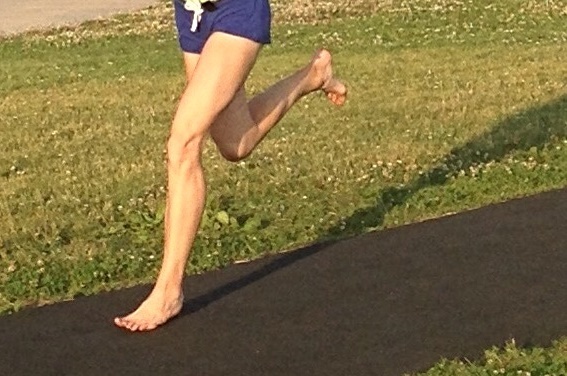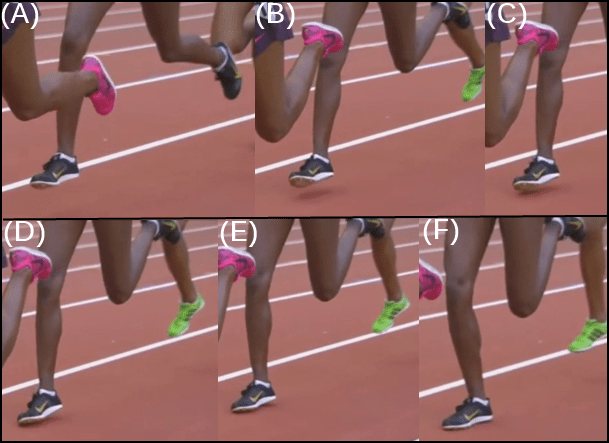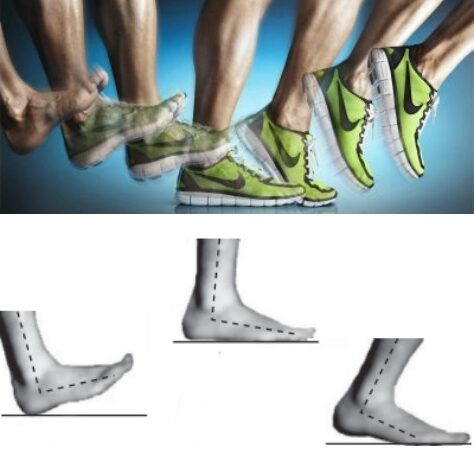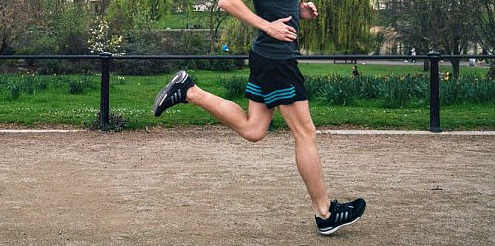Because of its growing scientific-backing, forefoot running sustains significantly safer, and more economical than heel strike running across all distances, even the marathon as forefoot runners have broken more world records by a significantly larger multiple. But, what is it about forefoot running that makes it the best path for all runners?

Several studies (references below article) have shown that forefoot running engages better leg swing control and foot-step stability which breaks the flow of high impact, while giving you an efficient, acceleration that is easier to sustain.
More specifically, the reductions in net forces are induced by a smoother placement of the forefoot on the ground at landing, whereas heel striking when running was found to produce more movement rigidity, which damages multiple areas of the body, while raising muscle energy costs.
A landmark study in the journal, Nature, provides important evidence on this in that when the researchers compared the bio-mechanical parameters of forefoot running vs heel strike running, they found that the movement patterns of the foot in a forefoot strike landing allowed for a more smooth, glide-like stride than a heel strike.
How exactly does a forefoot strike allow for a smoother ride than a heel strike?
Below, shows the sequence of motions the foot makes with the ground in a forefoot strike that accounts for big reductions in the time spent braking (deceleration), and allows the entire foot to roll better with the ground. At the same time, the arch works better at loading more energy-saving elastic power, which makes your stride more spring-enable, allowing the foot to spring up with minimal muscle efforts.


At landing, after the heel has pounded into the ground, the foot rolls heel-to-toe which causes the foot to make a longer line of travel, allowing more chance of the foot to alter from its neutral line, which it does, and is pushed into extreme positions (also known as foot over-pronation). In doing so, there’s a much higher exposure to an array of surface forces, such as friction and rotational stress, as well as more bending and twisting strain is transferred up the leg into the knee. The net effect of this is a choppy, slow-churning movement pattern of the foot that also makes inefficient use of the foot’s arch! (More on that here!)
Case in point, a pioneering study in the Journal of Biomechanics revealed that heel strike running caused foot strike position to land too far ahead of the body. This resulted in a rapid collision force that caused the body to stop abruptly for too long, along with the point of impact on the foot.


Whats worse, heel strike running engages larger, lunge-like steps that also reduces stride smoothness, while causing the collisional force from the rapid deceleration to produce more jolting force on the body!
By these measures, heel strike runners also tend to look less smooth and more choppy than forefoot runners because the mechanical components of heel striking have the highest prevalence of physical stressors and greater loading on the joint, namely the knee-joint.
Forefoot running naturally removes the mechanical clashes of heel strike running by allowing the body to spend less time decelerating and more time seamlessly gliding forward, because that is how forefoot runners appear — glide-like, and effortless, since there’s far less impact for the body to overcome.
Still need more convincing that forefoot running is better than heel strike running? Here are all the evidence-backed reasons forefoot running is the safest, most efficient way to run and why heel strike running is most damaging!
If you’ve enjoyed my blog post, you’ll love my YouTube channel, here, where I show why forefoot running works!

References:
Chi, K and Schmitt, D. Mechanical energy and effective foot mass during impact loading of walking and running. J Biomech (2005); (7):1387-95.
Friesenbichler, B., Stirling, LM., Federolf. P. and Nigg, BM. Tissue vibration in prolonged running. J Biomech (2011) 4;44(1):116-20.
Jungers, WL. (2010). Biomechanics: Barefoot strikes back. Nature, 463:433-34.
Lieberman et al. Foot strike patterns and collision forces in habitually barefoot versus shod runners. Nature (2009); 463, 531-535

Bretta Riches
BSc Neurobiology; MSc Biomechanics candidate, ultra minimalist runner & founder of RunForefoot. I was a heel striker, always injured. I was inspired by the great Tirunesh Dibaba to try forefoot running. Now, I'm injury free. This is why I launched Run Forefoot, to advocate the health & performance benefits of forefoot running and to raise awareness on the dangers of heel striking, because the world needs to know.
Latest posts by Bretta Riches (see all)
- Does Foot Strike Really Matter in Running? YES! - 17/04/2024
- Heel Lifts Increase Injury in Runners - 16/04/2024
- Are Minimalist Shoes Good for Seniors? YES! - 14/04/2024
